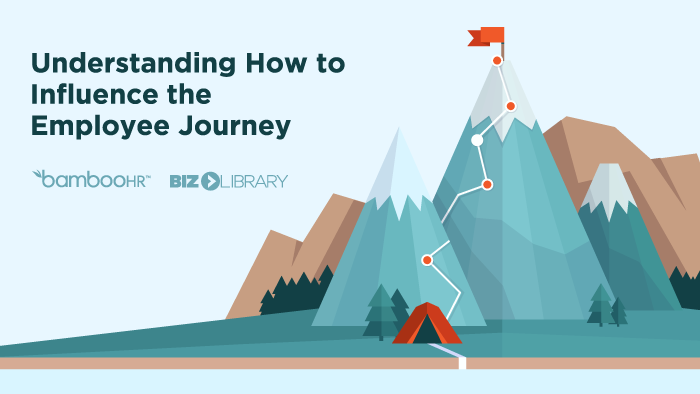
Are there employees in your organization right now who are overworked or burnt out? Are there some who rarely or never take vacations? Can you see obvious signs of prolonged stress but are unable to convince them to take a break?
Does any of this sound like you, yourself?
There are plenty of jokes and sayings that illustrate how rest often gets pushed aside in our society, such as, “I’ll sleep when I’m dead.”
There’s a joke about life in college that says: “Good grades, social life, sleep… pick two.”
Or there’s the phrase “Work hard, play hard.”
But what about “rest hard”?
Rest and innovation go hand in hand – for a business to stay competitive, its culture has to recognize behaviors that support innovation and real productivity.
Hard work is highly valued in our society, and for good reason. Giving our best efforts to a cause, a project, or a steady climb up the ladder toward success are what often yield incredible inventions and feats of ingenuity that benefit our culture.
However, when raises, promotions, reputations, and pride are on the line, we have a knack for viewing hard work as superior to rest.
And that mindset spells burnout.
The World Health Organization says causes of employee burnout come from “chronic workplace stress that has not been successfully managed.”
Preventing overwork and burnout in your organization needs to be a team effort – your employees need to know how to manage their stress, and your organization needs to create a culture that helps them do it.
Underlying Mindsets Around PTO
Productive rest often gets shoved to the backburner for the sake of pushing onward and upward. But problems arise when rest is neglected, and that forward motion turns into spinning wheels.
If our brains are headed toward burnout, but we can’t or won’t put work on hold for rest, the quality of that work is going to suffer compared to what it could’ve been if we’d taken some time away from it.
In a survey of 1,067 employees conducted by T-Sheets, 61% of those who received paid time off did not use all of it last year, and 52% of employees with PTO said they’ve worked while they were supposed to be off.
The top two reasons survey respondents gave for not using PTO were saving it to carry over and having a heavy workload.
Further survey results showed that 84% of respondents still go into work when they’re sick, and 33% say it’s because their employer creates a culture of working when you’re sick.
Implications of these results show that many employees are either directly or indirectly (through culture) expected to favor working over taking a healthy amount of break time.
If there’s a mindset in your company that taking time off, or even short breaks throughout the day, comes across as not being a hard worker, dealing with employee burnout is going to require a clear culture shift.
Perhaps this mindset is inherent in the way achievements are rewarded, while successful rest goes unacknowledged. Have you ever seen someone get a plaque for coming back to work completely refreshed after a vacation?
If the value of rest is diminished compared to hard work, it’s tempting for employees to continue pushing maxed out brains to look like a good worker.
Busyness is not synonymous with good business.
The fear of looking unproductive can be a menace on your organization’s innovative power. Thinking about things that don’t yet exist and using problem-solving skills requires time to shut out the to-do list. Innovation needs time to break the fixation on what is tangible to see what might be.
This means that rest and innovation go hand in hand.
For a business to stay competitive and continually come up with ways to improve and better serve its customers, its culture has to recognize behaviors that support innovation and real productivity.
Managers Should Encourage Breaks to Discourage Burnout
Does your company tell employees it’s healthy and helpful to take breaks throughout the day? Do you cross-train to prevent overworked employees from feeling like they can’t take time off because something won’t get done?
Productivity and rest represent two sides of a scale that continually need to be balanced. They each lose their luster when the balance is off, which makes neither one superior to the other.
It’s one thing for company leaders and managers to say it’s good to rest, but like every other facet of building or changing company culture, those words have to be backed up by actions.
Are your leaders modeling what it looks like to value rest?
That underlying mindset of breaks looking like laziness is often a direct result of leaders being off balance in their productivity to rest ratio.
“If you have a boss that’s never taking breaks, it’s hard to feel like you can take one,” said Christine Corbet, managing consultant in the New York City office of Right Management.
Especially when you have employees who want to be recognized, get a promotion, and make a positive impact with the company (all signs of the high engagement that many companies dream of), managers should make a point to set the example for a healthy balance of work to rest.
That’s how you promote high performance and prevent employee burnout at the same time.
But, that probably sounds easier said than done, since the overflowing responsibilities of managers typically make them the most prone to overwork.
Try not to approach finding a good work/rest balance as “adding rest time to the to-do list.” The goal here is to learn how to make breaks genuinely restful, so time spent on work becomes more focused and productive. You don’t want people falling victim to Parkinson’s Law – the theory that work expands to fill the time allotted to it.
A good tactic is scheduling breaks throughout the day ahead of time. Recent research has suggested that 52 minutes of work followed by a 17 minute break is the optimal ratio, but this could look different for everyone.
What constitutes a good break, then? It’s probably not always going to look the same, so here are several suggestions:
- Get away from the screens. Step away from the computer. If you need to catch up with messages on your phone, only spend a couple minutes on them, then put the phone away. Your eyeballs need a break too!
- Move and stretch. Getting up and moving around increases blood flow and will help your brain become more focused when you return to working.
- Go outside. If you’re able to take a quick walk or simply go sit outside, do it! Reap the benefits of your face being illuminated by the sun rather than a screen.
- Try taking breaks with your colleagues. Getting to know each other better beyond work conversation builds trust and helps everyone to be more collaborative.
- Play a game. Card games, brain teasers, puzzles, quick board games – whether you play on your own or with a colleague, this is a great way to have fun and refresh your brain at the same time.
- Listen to music. You may be able to listen to music while working, but taking some time to close your eyes, stare out the window or walk around while intentionally listening to music that speaks to you can be highly beneficial for brain function.
Whether you rest best with a routine or by changing up your breaks, what’s important is to give your brain space to decompress and let your thoughts wander away from work for a few minutes.
For taking longer periods of time off work, a vacation away from the day to day absolutely has its benefits, but a getaway isn’t always a financially viable option. In that situation, it’s important to encourage employees to still take PTO, but understand how to make that time rejuvenating.
Heard of a staycation? It’s a great way to cut down on the stresses and expenses involved in planning a full-blown vacation. What’s important is to not let others dictate how your time should be spent.
Some people need to de-stress with a long hike, a spa day, golfing, reading a novel, etc. Others have projects around the house they’ve been wanting to finish forever, and the satisfaction of completing that will be a great brain boost for them.
Leaders Set the Example for Preventing Employee Burnout
When busyness and stress are a regular part of our lives, it can be challenging to make the mental jump from a to-do list to a clear mind. If overwork has been the norm, it takes practice to become as much of an expert in rest as you are in your line of work.
If burnout is increasingly an issue in your organization, you can address the problem by first looking to the rest habits of your leaders and managers. Are they using enough PTO? Are they taking regular breaks rather than working straight through the day? Do their teams’ habits look similar to theirs?
You can tell employees they should take more PTO, but if leadership doesn’t clearly value rest as part of company culture, many may still feel guilty taking time off and won’t come back truly rested and more focused.
Start by encouraging your leaders to be diligent about practicing rest themselves, setting the example for everyone on their teams.
That’s how to build a culture that masters the work/rest balance, and eradicate the issue of employee burnout from your organization.

